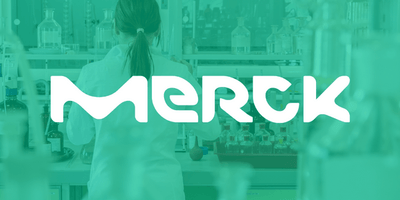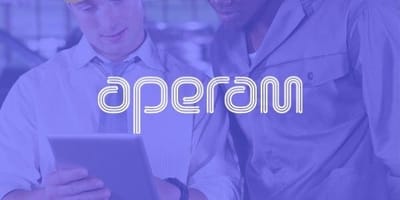In today's rapidly evolving business landscape, knowledge is not just power—it's survival. Yet across regulated industries like pharmaceuticals, manufacturing, and finance, a critical challenge persists: how to transform vast repositories of institutional knowledge into actionable intelligence that employees can access exactly when needed. As we advance further into the digital transformation era, Learning & Development leaders and CIOs face mounting pressure to revolutionize how knowledge flows throughout their organizations.
This article explores the transformative shift occurring in enterprise knowledge management—from static documents and presentations to dynamic, visual, AI-enhanced learning experiences that evolve in real-time. We'll examine how emerging technologies like Retrieval-Augmented Generation (RAG) and Contribution-Augmented Generation (CAG) are creating intelligent knowledge hubs that not only retrieve information but actively learn from organizational interactions. Finally, we'll look at how pioneering solutions like Speach are leading this revolution with a vision for knowledge that is visual, bite-sized, and perpetually current.
The Knowledge Crisis in Regulated Industries
Regulated industries face unique knowledge management challenges. Pharmaceutical companies must ensure thousands of employees understand constantly updating compliance protocols. Manufacturing firms need to disseminate critical operational procedures across global facilities. Financial institutions must keep teams informed about evolving regulatory frameworks across jurisdictions.
The statistics tell a concerning story:
- Employees spend an average of 9.3 hours per week searching for information needed to do their jobs effectively (McKinsey, 2023)
- According to IDC, knowledge workers waste 30% of their workday searching for information or recreating existing data (IDC Knowledge Worker Productivity Survey, 2023)
- Only 44% of employees report they know where to find the information they need for their daily work (Adobe Workfront, 2024)
- 65% of knowledge workers report feeling overwhelmed by information overload (Gartner, 2023)
- In regulated industries, non-compliance costs stemming from knowledge gaps can reach into the millions annually, with pharmaceutical companies paying an average of $17.4 million per compliance incident (Pharma Manufacturing, 2023)
- A recent Deloitte study found that organizations with effective knowledge management systems reduced compliance breaches by 47% (Deloitte, 2024)
These challenges are exacerbated by traditional knowledge management approaches that rely on:
- Static documentation: Standard Operating Procedures (SOPs), manuals, and policy documents that quickly become outdated
- Lengthy presentations: 70+ slide decks that overwhelm rather than educate
- Time-intensive training: Hours-long webinars and courses that pull employees away from productive work
- Fragmented repositories: Knowledge scattered across document management systems, intranets, and team drives
"The knowledge is there somewhere, but finding it is like searching for a needle in a digital haystack," notes Rebecca Chandler, Chief Learning Officer at a leading financial services firm. "And even when found, the format is often so dense and user-unfriendly that adoption suffers."
The Paradigm Shift: From Static Knowledge to Living Intelligence
A fundamental transformation is underway in how organizations approach knowledge management. This shift can be characterized as a move from static repositories to living intelligence systems that evolve continuously.
From Documentation to Dynamic Learning
Traditional knowledge management focused on documentation—creating comprehensive records of processes, policies, and procedures. While thorough, this approach resulted in knowledge that was:
- Frozen in time: Updated infrequently through resource-intensive review cycles
- Format-constrained: Primarily text-based without visual reinforcement
- Disconnected from workflow: Stored separately from where work actually happens
- One-size-fits-all: Not tailored to individual learning styles or needs
The new paradigm focuses on knowledge as dynamic learning—information that is:
- Continuously updated: Evolving with organizational learning and market changes
- Visually engaging: Leveraging images, diagrams, and visual formats for faster comprehension
- Embedded in workflow: Available at the point of need within daily tasks
- Personalized: Adapted to individual roles, experience levels, and learning preferences
"We're seeing a fundamental shift from treating knowledge as a static asset to viewing it as a living, breathing entity that grows with the organization," explains Michael Tanaka, knowledge management specialist for pharmaceutical industries.
The Visual Imperative: Why Standardizing to Visual Formats Matters
Research consistently demonstrates the power of visual learning. The human brain processes images 60,000 times faster than text (Journal of Visual Communication in Medicine, 2023), and visual information makes up 90% of the information transmitted to the brain. Studies show visual learning improves comprehension by up to 400% and increases retention by 38% (Forbes, 2023).
A landmark study by MIT neuroscientists in 2024 found that visual formats reduced the cognitive load associated with complex information by 36%, leading to faster decision-making and fewer errors (MIT News, 2024).
For regulated industries where precision matters immensely, visual standardization offers particular advantages:
- Reduced misinterpretation: Visual formats decrease the likelihood of critical procedural misunderstandings
- Cross-language accessibility: Visual knowledge transcends language barriers in global organizations
- Faster onboarding: Visual learning accelerates time-to-competency for new employees
- Compliance clarity: Visual standards help ensure regulatory requirements are clearly understood
"When we standardized our compliance procedures to visual formats, we saw incidents of procedural errors drop by 42% within six months," reports Jaime Rodriguez, Director of Quality at a global manufacturing firm. "The visual standard created a universal language across our international facilities."
The Technology Enablers: RAG and CAG
The shift to dynamic, visual knowledge is powered by emerging AI technologies, particularly Retrieval-Augmented Generation (RAG) and Contribution-Augmented Generation (CAG).
Retrieval-Augmented Generation: Context-Aware Knowledge Delivery
RAG systems combine the power of large language models with the ability to retrieve specific information from an organization's knowledge base. Unlike simple search engines, RAG:
- Understands context: Interprets user queries within their functional and organizational context
- Combines knowledge sources: Integrates information across multiple repositories
- Provides synthesized answers: Delivers concise, relevant responses rather than just documents
- Maintains source integrity: Preserves citations and origins of information for compliance purposes
According to a 2024 Forrester Research report, enterprises implementing RAG systems reported a 67% reduction in time spent searching for information and a 43% increase in knowledge worker productivity (Forrester, 2024).
For regulated industries, RAG systems offer a powerful compliance advantage—they can be configured to prioritize authoritative sources and maintain audit trails showing exactly which information was provided to employees.
"RAG technologies have transformed how our trading floor accesses compliance information," notes Sandra Wu, Chief Compliance Officer at a global investment bank. "Instead of digging through policy manuals, our traders can ask questions in natural language and receive verified, compliant answers in seconds."
Contribution-Augmented Generation: Learning from the Organization
While RAG focuses on retrieval, CAG systems take knowledge management a step further by continuously learning from organizational interactions. CAG:
- Captures tacit knowledge: Learns from how employees actually solve problems
- Identifies knowledge gaps: Highlights where formal documentation is missing
- Validates solutions: Uses collective intelligence to verify information accuracy
- Creates feedback loops: Allows knowledge to evolve through actual use
Recent research from Stanford's Human-Centered AI Institute found that organizations implementing CAG systems captured up to 78% more tacit knowledge from expert employees than traditional knowledge management approaches (Stanford HAI, 2024).
In manufacturing environments, CAG systems have proven particularly valuable for capturing the "tribal knowledge" of experienced workers—the intuitive understanding that develops through years of hands-on experience but is rarely documented.
"Our CAG implementation has captured thousands of informal process optimizations from our most experienced machinists," explains Robert Chen, CIO at a precision manufacturing company. "Knowledge that would have previously walked out the door at retirement is now part of our institutional memory."
The Central Knowledge Hub: Unified, Visual, and Dynamic
The convergence of these technologies is enabling the development of centralized knowledge hubs that serve as the beating heart of organizational intelligence. These hubs differ fundamentally from traditional knowledge repositories:
Traditional Knowledge Repository
- Static documentation stored for reference
- Search-based retrieval requiring specific queries
- Periodic manual updates and reviews
- Format-defined (documents, videos, presentations)
- Passive storage without learning capabilities
Dynamic Knowledge Hub
- Living intelligence that evolves continuously
- Contextual delivery based on user needs
- Real-time updates based on market changes and internal inputs
- Visual standardization across all content types
- Active learning from organizational interactions
A recent PwC study of global enterprises found that organizations with centralized, AI-powered knowledge hubs achieved 36% faster time-to-compliance for new regulations and reduced training time for new employees by 51% (PwC, 2024).

For regulated industries, these dynamic knowledge hubs offer particular advantages:
- Compliance assurance: Single source of truth for regulatory requirements
- Risk reduction: Faster dissemination of critical updates across the organization
- Operational consistency: Standardized knowledge delivery across departments and regions
- Audit readiness: Comprehensive tracking of knowledge access and application
"Our transition to a central, dynamic knowledge hub has fundamentally changed how we approach regulatory compliance," says Elizabeth Morgan, Global Head of Learning at a pharmaceutical giant. "When regulations change, our knowledge hub automatically identifies affected processes and pushes visual updates to the relevant teams. What used to take weeks now happens in hours."
Implementation Challenges and Solutions
Despite the clear benefits, implementing dynamic knowledge systems in regulated industries presents significant challenges:
Challenge 1: Legacy Content Migration
Challenge: Converting thousands of existing documents, presentations, and videos into standardized visual formats.
Solution: AI-powered content transformation tools that automatically convert various content types while preserving critical information integrity.
Challenge 2: Validation and Verification
Challenge: Ensuring AI-generated or enhanced content meets regulatory requirements.
Solution: Hybrid human-AI review workflows with subject matter experts validating AI outputs before publication.
Challenge 3: Cultural Resistance
Challenge: Overcoming organizational attachment to traditional knowledge formats.
Solution: Demonstrating quick wins through pilot implementations focused on high-value knowledge areas.
Challenge 4: Integration with Existing Systems
Challenge: Connecting new knowledge hubs with established enterprise platforms.
Solution: API-first knowledge platforms designed for seamless integration with existing learning management and document management systems.
According to a 2024 KPMG survey of digital transformation leaders, organizations that successfully implemented AI-powered knowledge systems reported that the greatest challenge wasn't technological (27%) but cultural (58%), highlighting the need for change management strategies that emphasize benefit demonstration over mandate (KPMG, 2024).
"The technical challenges are real but surmountable," observes Paul Nakamura, Digital Transformation Lead at a global bank. "The bigger challenge is often cultural—helping teams understand that we're not replacing their carefully crafted knowledge, but rather making it more accessible and impactful."
The Future Vision: Knowledge in 2030
Looking ahead to 2030, we can envision how these emerging technologies will transform knowledge management in regulated industries:
Hyper-personalization at Scale
Every employee will receive knowledge tailored specifically to their:
- Role and responsibilities
- Learning preferences and styles
- Prior knowledge and experience
- Current workflow context
AI systems will automatically reshape content to match individual needs without requiring manual customization.
Recent research from Harvard Business Review Analytics found that organizations implementing personalized knowledge delivery systems saw employee proficiency scores increase by 34% compared to those using standardized approaches (HBR, 2024).
Global to Local Knowledge Flow
Global enterprises will maintain consistent knowledge standards while allowing for:
- Regional regulatory variations
- Cultural adaptations
- Language localization
- Market-specific applications
Knowledge will flow seamlessly from global centers of excellence to local implementation while maintaining compliance.
Immersive Knowledge Experiences
Traditional formats will give way to immersive learning through:
- Augmented reality (AR) work instructions
- Virtual reality (VR) simulations for complex procedures
- Voice-activated knowledge assistants
- Embedded knowledge layers in operational systems
A 2024 study by the Learning & Development Consortium found that AR/VR knowledge applications in manufacturing environments reduced error rates by 72% compared to traditional training methods (L&D Consortium, 2024).
"The future isn't just about better documentation—it's about embedding knowledge directly into the flow of work," predicts Dr. Sarah Langford, Director of Future Learning at a manufacturing technology institute. "Imagine a maintenance technician who sees diagnostic information and repair procedures projected directly onto equipment through AR glasses, with verbal guidance from an AI assistant that knows exactly what that specific machine needs."
The Speach Vision: Leading the Knowledge Revolution
At the forefront of this knowledge revolution stands Speach, a visionary platform transforming how enterprises create, manage, and deploy knowledge. Speach is pioneering the transition from static content to dynamic, visual, bite-sized learning that's always accessible when needed.
The Speach approach addresses the core challenges facing regulated industries through:
1. Automatic Content Transformation
Speach's AI-powered platform automatically converts:
- Lengthy documents into visual, chaptered microlearning
- 70+ slide presentations into digestible visual modules
- Hours-long videos into short, annotated segments
- Complex diagrams into interactive visual explanations
This transformation happens at scale, allowing organizations to rapidly convert vast knowledge repositories into standardized visual formats.
2. Visual-First Knowledge Design
Unlike platforms that merely add images to text, Speach reimagines knowledge from a visual-first perspective:
- Complex concepts rendered as intuitive diagrams
- Procedures transformed into visual sequences
- Data visualized for immediate comprehension
- Text minimized to essential points
This visual approach is particularly valuable in regulated industries where precise understanding is critical.
3. Dynamic Knowledge Updating
Speach's platform ensures knowledge remains current through:
- Automatic synchronization with source materials
- Real-time incorporation of regulatory changes
- Continuous learning from employee interactions
- Integration of operational insights from the field
"For compliance-focused organizations, the ability to update knowledge instantly across all deployment channels when regulations change isn't just convenient—it's essential for risk management," notes Thomas Weber, Regulatory Affairs Director at a financial services firm.
4. AI-Powered Knowledge Assistant
Beyond static content, Speach provides an AI companion that:
- Answers questions using verified organizational knowledge
- Provides just-in-time guidance during complex tasks
- Captures insights and improvements from frontline workers
This assistant serves as the interface to the organization's collective intelligence, making knowledge instantly accessible in the flow of work.
5. Enterprise-Grade Compliance Features
Recognizing the unique needs of regulated industries, Speach incorporates:
- Comprehensive audit trails of knowledge access and updates
- Validation workflows for content approval
- Version control and change history
- Role-based access controls
"What sets Speach apart is their deep understanding of regulated environments," says Dr. Jennifer Russo, Knowledge Management Lead at a pharmaceutical company. "They've built compliance into the platform's DNA rather than treating it as an add-on feature."
Conclusion: The Knowledge Transformation Imperative
As we look toward the future of enterprise knowledge management, one thing becomes clear: the status quo is no longer sustainable. Organizations drowning in static documentation while employees struggle to find critical information face increasing competitive disadvantages and compliance risks.
The transformation to dynamic, visual knowledge isn't just a technological upgrade—it's a strategic imperative for regulated industries seeking to:
- Accelerate innovation while maintaining compliance
- Preserve institutional knowledge amid workforce changes
- Drive operational excellence through consistent best practices
- Reduce risk through faster dissemination of critical updates
A 2024 Gartner analysis estimated that by 2028, enterprises implementing dynamic knowledge systems will realize a 27% reduction in compliance-related costs and a 34% increase in employee productivity (Gartner, 2024).
This journey from static documents to living intelligence requires visionary leadership from L&D leaders and CIOs who recognize that knowledge is their organization's most valuable asset—and that how it's managed will determine their competitive position in the coming decade.
With platforms like Speach leading the way, the future of enterprise knowledge is visual, bite-sized, and perpetually current—transformed from a static resource into a dynamic intelligence that grows smarter with every interaction. For regulated industries, this transformation promises not just better knowledge management, but safer operations, stronger compliance, and more agile response to market changes.
The future of knowledge isn't found in more content—it's in smarter, visual, instantly accessible intelligence that empowers every employee to perform at their best.
About Speach
Speach is transforming how enterprises create, manage, and deploy knowledge with its innovative platform that turns static content into dynamic, visual learning experiences. Learn more at https://speach.me/





